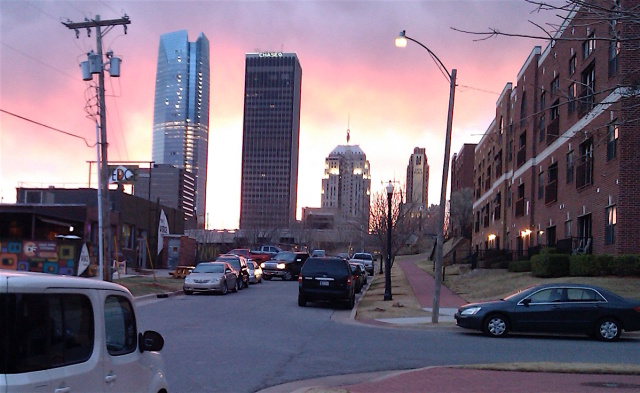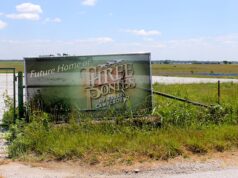
The next time you’re driving into Oklahoma City from Tulsa, think about the term “urban sprawl” and keep an eye peeled for the OKC “City Limits” sign.
Driving 75 mph, you might miss it, especially because you’ll zoom past it long before you feel like you’re even near Oklahoma City. Here’s a hint: It’s about 10 miles east of Lake Arcadia. When the sun goes down, it’s shrouded in utter darkness.
For longtime residents, the jokes and facts about OKC’s status as the nation’s fourth-largest land-mass municipality are well known. They make for good, befuddling bar trivia to tipsy out-of-towners or those who have just moved here.
But the impact of OKC’s sprawling limits — and, thus, sprawling “urban” development — is even bigger than the distance between Western Heights and Oklahoma Centennial high schools.
That’s why the project NewsOK.com’s Steve Lackmeyer published to start this week is incredibly interesting and compelling.
Titled Unsustainable: After decades of sprawl, Oklahoma City officials know something must change, Lackmeyer’s art-heavy digital feature is replete with maps, charts and a dozen interviews.
Lackmeyer, the longtime business journalist for Oklahoma’s leading newspaper, opens Unsustainable with four graphs that set the mood like a strong aperitif before a well-conceived meal:
Oklahoma City is implementing an unprecedented series of actions to slow sprawl, require developers to help pay for costs associated with growth and even potentially de-annex far-flung areas of the city to end what Mayor Mick Cornett and others see as an unsustainable status quo.
At 621 square miles, Oklahoma City is geographically bigger than any city in Texas. Excluding sparsely populated large towns in Alaska and Montana, Oklahoma City ranks fourth in the nation in size.
The strain is evident with each pothole-riddled street, the demand for new fire stations and a backlog of requests for traffic signals, road improvements and water lines needed to keep up with a population that has in the past 25 years grown from 403,040 to 581,688 and is expected to hit 810,883 by 2040.
“We’re an anomaly,” said Aubrey Hammontree, who as planning director oversaw the five-year effort completed this year to create Plan OKC, the city’s first new comprehensive plan since 1977. “There are cities as large as Oklahoma City. But there are just a handful of them, and they are structured differently.”
While “structured differently” might be a polite way for Hammontree to say, “Holy shit, have you tried to take the bus around here?” the revelation that OKC leaders are actively attempting to change and improve how developers affect our built environment holds substantial weight.
So check out Lackmeyer’s piece and its appealing presentation at the hands of digital-media specialist Richard Hall.
In a day and age where we’re all trying to figure out how to produce and present important, long-form journalism in the robotic ether, Unsustainable stands as a prime example.





















